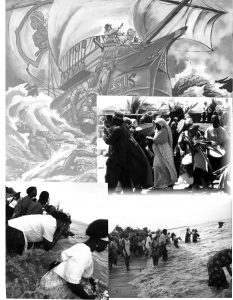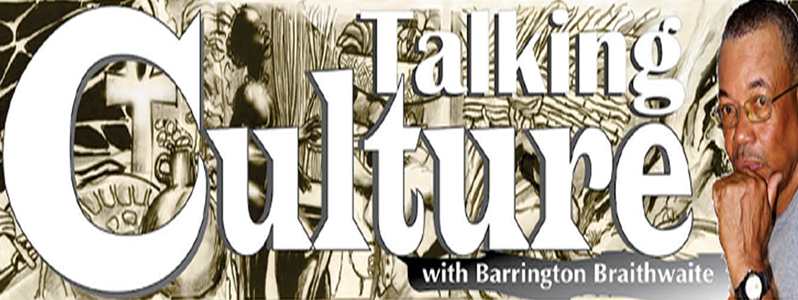– Commemorating the MAAFA-African holocaust
TODAY with the rise of the sea, the African Cultural & Development Association (ACDA) will commemorate on the seawall by the bandstand an act of respect and remembrance to the ancestors of Afro-New World peoples, with special reference to the colonies now known as the Republic of Guyana; who in their millions over 400 years have perished in the scourge of the Atlantic Slave Trade, benefiting the economic and cultural foundations of the Americas. In Ritual Pageantry, this necessary rite will be done to draw us away from the trivial and serious now, to the profound total, to reflect and understand that from our ancestral fount a tremendous sacrifice was imposed and brutally conducted. A sacrifice that commenced the making of the Americas, not forgetting the Africans that suffered on the continent through the Arab slave trade, but this commemorates the horrors of the middle passage and times that followed. I was questioned in the early years when the ‘African Holocaust’ was first launched if ACDA was now worshipping ancestors. I was going from Hadfield Street to Brickdam when a colleague called me from the entrance of the Brickdam Cathedral. I was irritated by his question so I was impatient, and asked him who was his favourite Saint? He replied Saint Peter.
“So you pray to his name occasionally?” I asked and he responded, “Yes, he’s a Saint.” I accused him, “But it’s a statue and if he did live, he was a man and was called a Saint by other men, so describe what you’re doing?” The argument attracted two other persons- another acquaintance and his lady friend. A balancing question was asked by the only female, which threw everything into perspective “Wuh actually the gathering pon de sea wall mean?” I explained that millions of Africans perished in the slave trade, whose blood numerous Guyanese share and it is the decent and conscious thing to remember that terrible sobering experience. It’s in our national anthem, “…both Bondsmen and free, laid their bones on your shore, This soil so they hallowed and from them are we…” The answer brought some level of agreement, and also revealed the realisation that sometimes hostility is a mask that hides the confusion of not knowing; and the taboo translates to the pride of asking for clarification, which admits to ignorance. 
But ignorance is obvious if the subject has hardly been taught. There is a kind of black-out on the conscious Guyanese landscape to that entire era because not much has been done to disseminate the published history of that period, and there is a serious independent library of material in existence. From Themes of Afro-Guyanese History to the Emancipation Magazines, to its Illustrated editions over a period of 20 years, to the publications by other Guyanese on the subject, nor is it encouraged in the visual or dramatic arts. None of that Literature was made available to the school system, so how are they to know, much less understand across our other human variations (races)?
The MAAFA in our context should be a case study that every Guyanese school child should have an understanding of, because it tells the story of every existing estate, town and village from its genesis to exodus, to glimpses of its salvation periods, to its secret wars, and will explain openly diversity within the five geographic nationalities that constitute our nation. Don’t raise your eyebrows when I say five instead of six, just follow the Facts; Amerindians, (all Mongolian tribes who had migrated to the new world before Columbus) Africans, (with specific reference to Africans brought during the Slave Trade and not travellers who came before) Europeans, (Columbus, Conquistadores, all other colonising continental Europeans which would include the Portuguese and their Moorish blood) East Indians, (who came during Indentureship) Chinese, (who also came as indentured workers). Without an expanded knowledge of the African Holocaust, a comprehensive history of Guyana cannot be told or ever understood. It all begins with recognising what and why the commemoration is held on the 12, October annually and to explore and digest the brutal and unpretentious Chronicles of what transpired before the slave ships arrived and unravel the inhumanity and humanity of what came after, is the grim and real history of our beginnings. This is the only place where the natural process towards national cohesion should and can begin, to purge the historical consciousness of our people crucified by racist politics and self-serving fictions.
The MAAFA commemoration though humble, and still, but not as much misunderstood today, places all other national festivals and celebrations in the context of the symbolic history of the nation of Guyana; as modest representations of what followed after, from the tortured bosom of the MAAFA. We peer timidly and selectively into the consequences but shun the details of the nature of the impetus. Can you imagine travelling for months in the hold of a ship, populated by dysentery, rats and death, shackled to dying and dead kin’s men, hearing the screams of men and women who have succumbed to madness, awakened to drag the corpse of your brother, along with the fevered body of a brutalised young female, then throw them overboard to the school of sharks who have made the death ships their companion? With incredible will and strength must be attributed to our ancestors who survived, it is our responsibility to honour their memory, and by our deeds respect and comprehend the sacrifices they endured as our living legacy, it begins with the commemoration of MAAFA.



.jpg)











